Someone should preserve Hong Kong’s protest art before it’s too late
Protesters have a new name for Hong Kong’s Civic Square, which fronts the under-siege government complex. To them, it is Umbrella Square, thanks to the adopted symbol of the city’s protest movement, examples of which are stacked into a giant sculpture nearby.
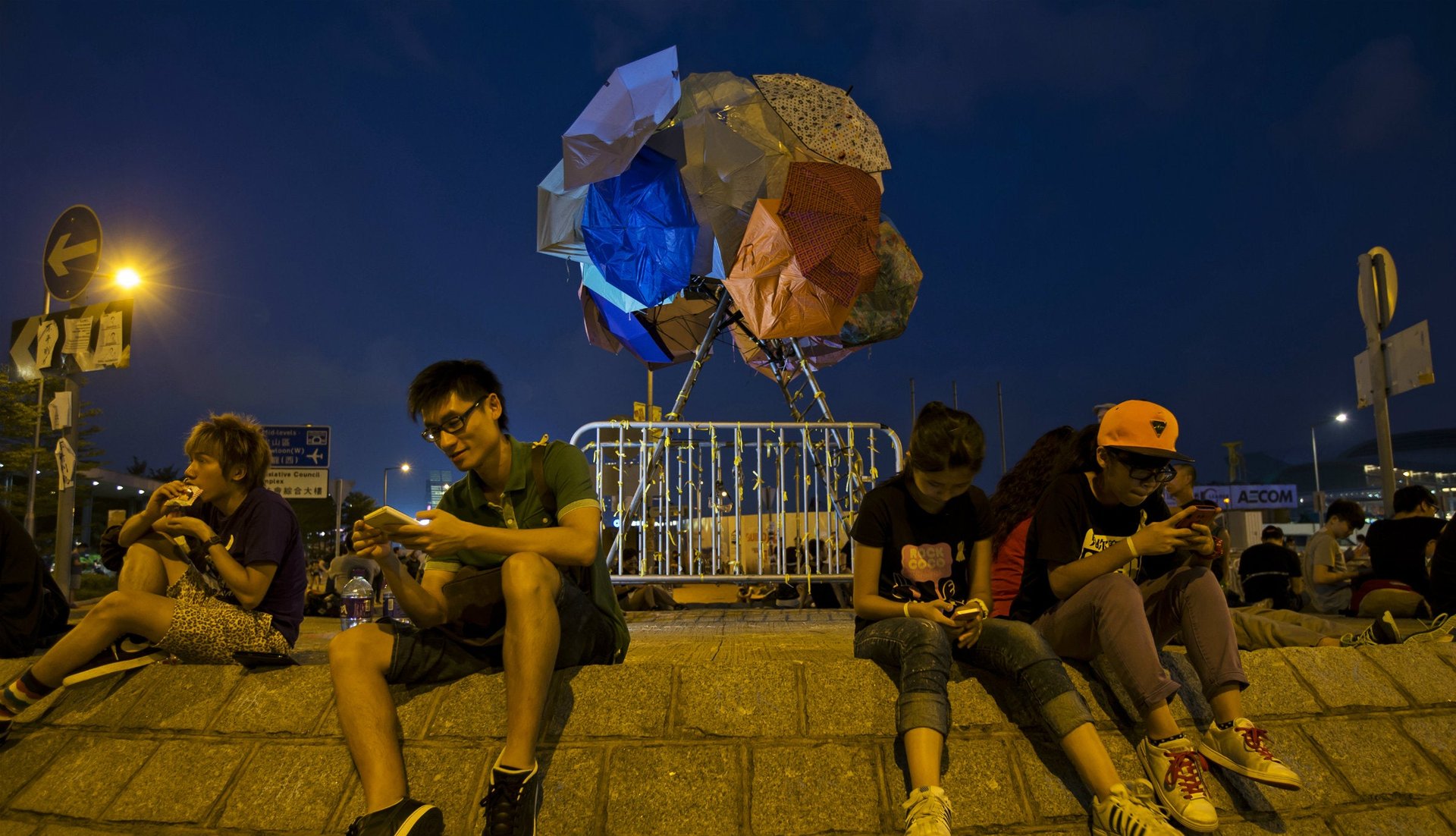

Protesters have a new name for Hong Kong’s Civic Square, which fronts the under-siege government complex. To them, it is Umbrella Square, thanks to the adopted symbol of the city’s protest movement, examples of which are stacked into a giant sculpture nearby.
The long, multi-lane stretch of road that runs behind the government complex has become an outdoor art gallery, attracting strolling office workers, families, and tourists who stop to ogle and photograph the students’ creations, and in some cases add their own flourishes.
There is plenty to see, including the “Umbrella Man”:
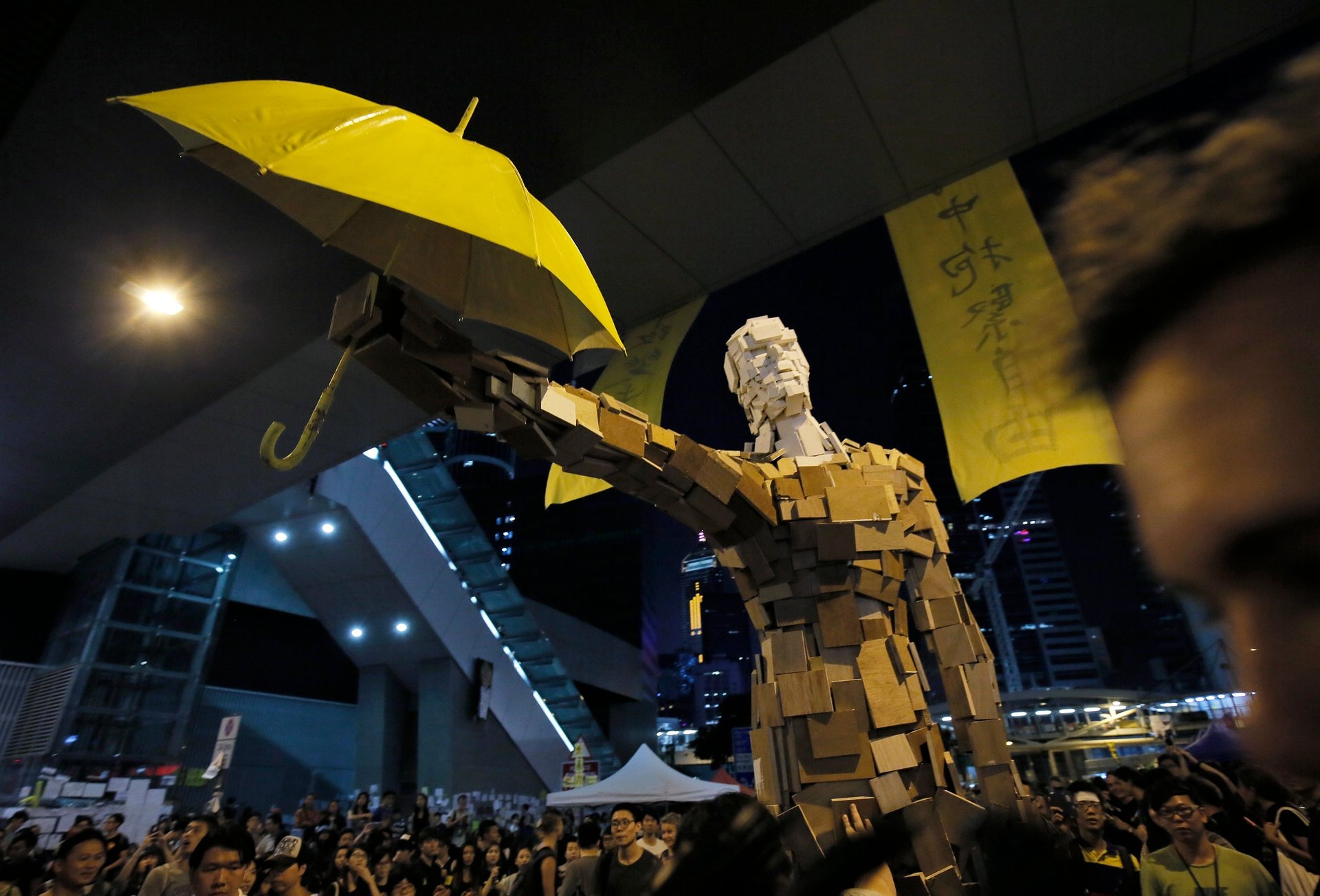
An entire side of a building, nicknamed the “Lennon Wall,” features tens of thousands of messages of support from around the world, scribbled on sticky notes that someone keeps stocked at the site:
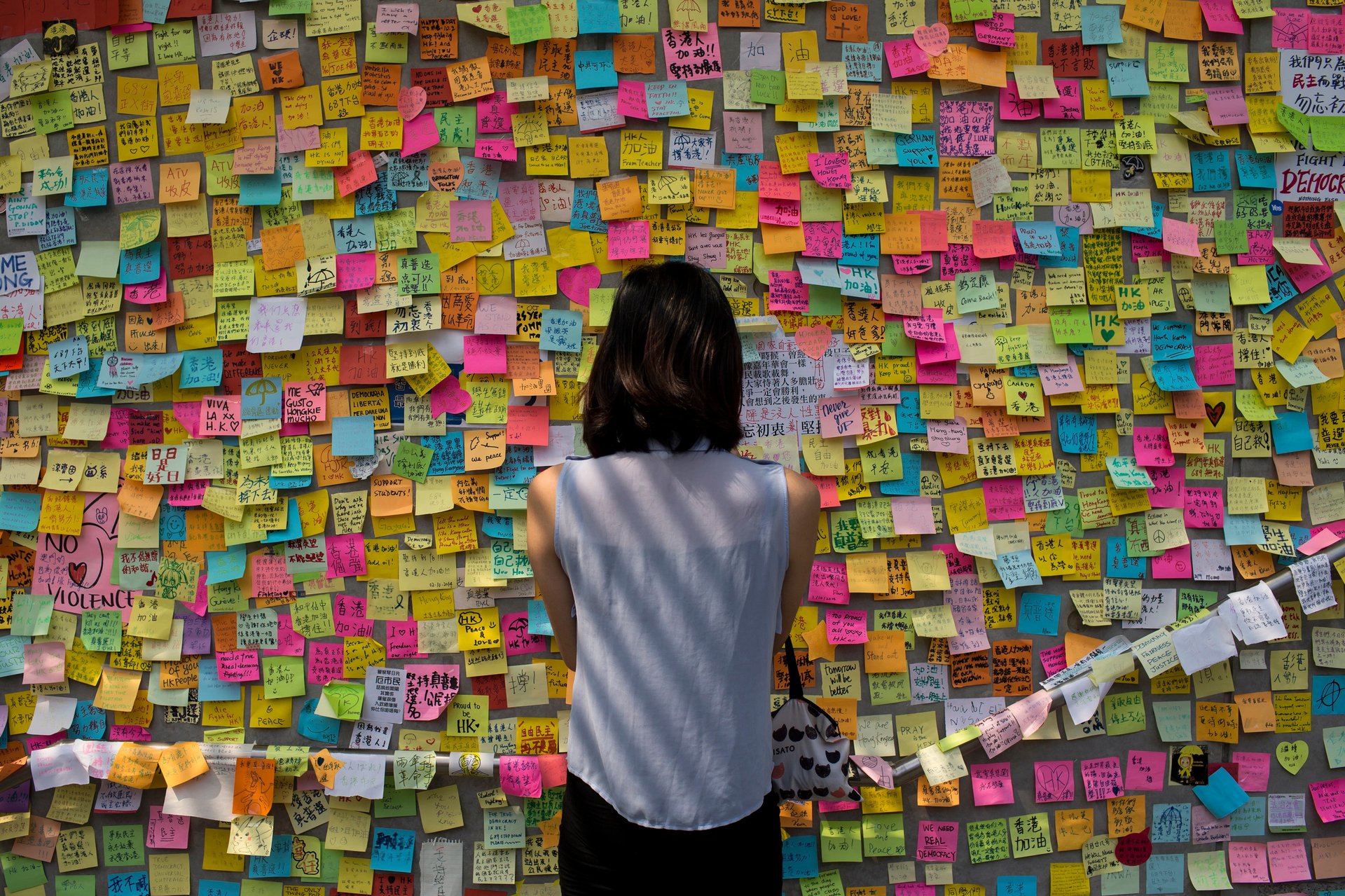
A giant concrete pillar covered with yellow ribbons and messages outside of the Legislative Council offices:
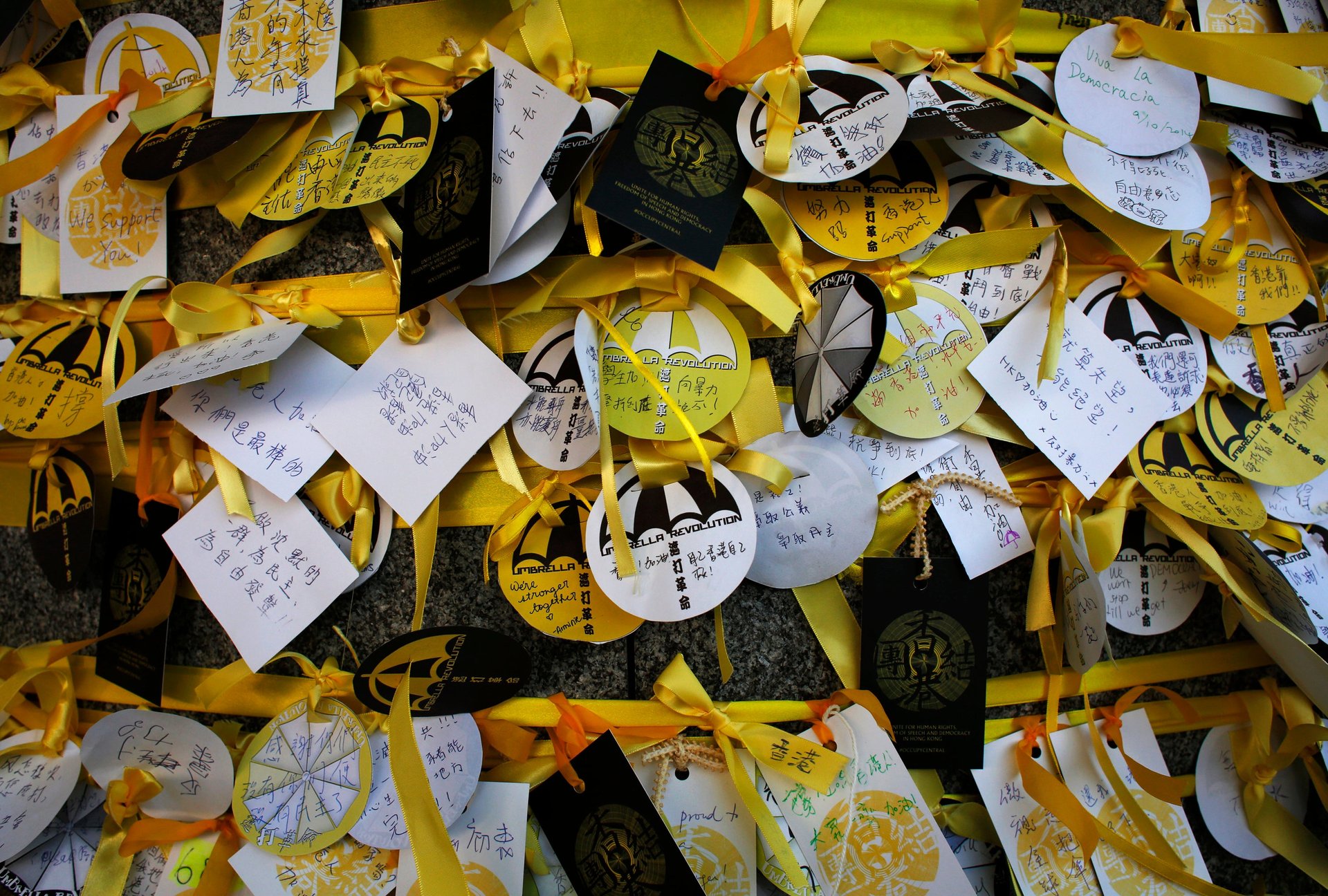
The aforementioned umbrella tree sculpture and a massive canopy made of stitched together umbrellas:
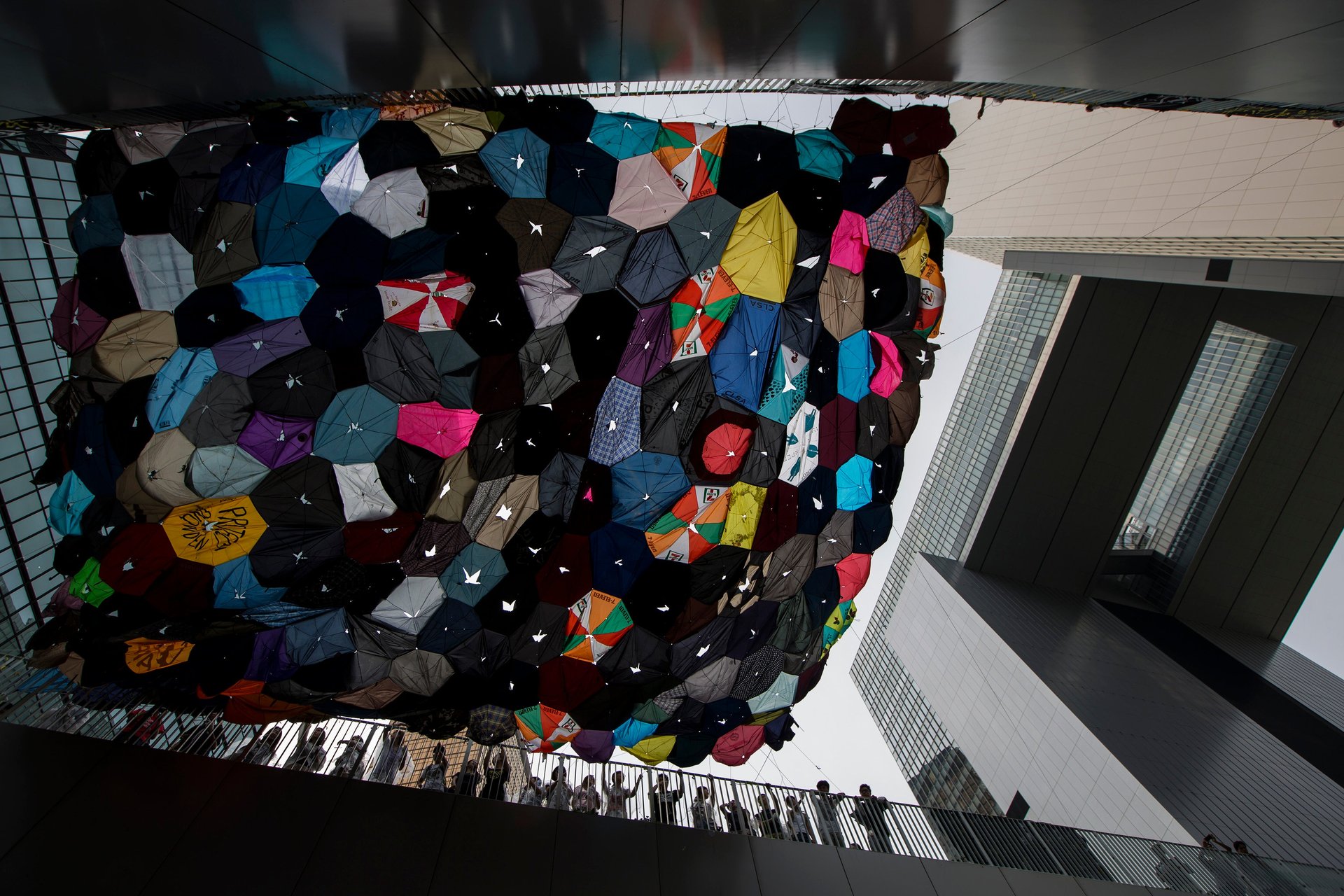
Not to mention dozens of banners in English and Cantonese (and cartoons, like the one that depicts student activist Joshua Wong as Batman):
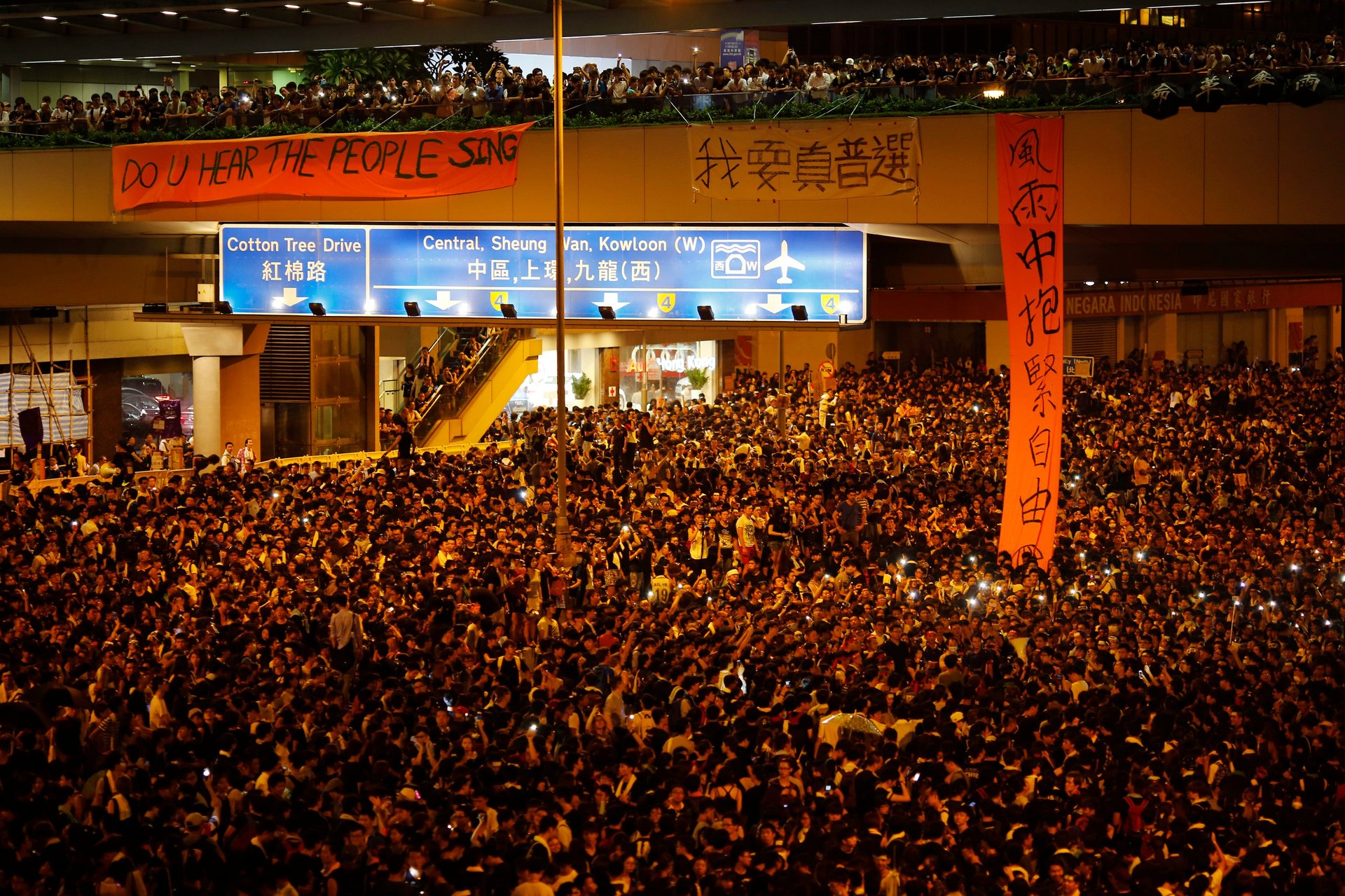
When, and how, will all of this protest art come down? The protests are technically illegal, held under a constant threat that the government will order police to clear the sites.
And while there are more important things at stake, namely the political future of Hong Kong, it would be a shame if the protest banners, statues, and other cultural artifacts were lost or destroyed. They would make an excellent permanent exhibition about Hong Kong’s 2014 democracy movement, regardless of its outcome.
Such an exhibition is unlikely to be held at Hong Kong’s government-run museum of history. Local theater blog HKELD said today that it is contacting galleries and museums in Hong Kong, seeking preservationists to give a home to the art. A private dealer and collector has offered to store a few key works, including “umbrella man” and notes from the Lennon Wall, the blog noted in an update this evening.
It might not hurt to look farther afield, too. London’s Victoria & Albert Museum’s ongoing “Disobedient Objects” exhibition examines “the role of objects in movements for social change,” and displays “arts of rebellion from around the world.” Right now the show includes suffragette teacups, inflatable cobblestones, and orange dwarf hats worn to protest against communism in Poland in 1988, among other things. A few umbrellas would fit right in.